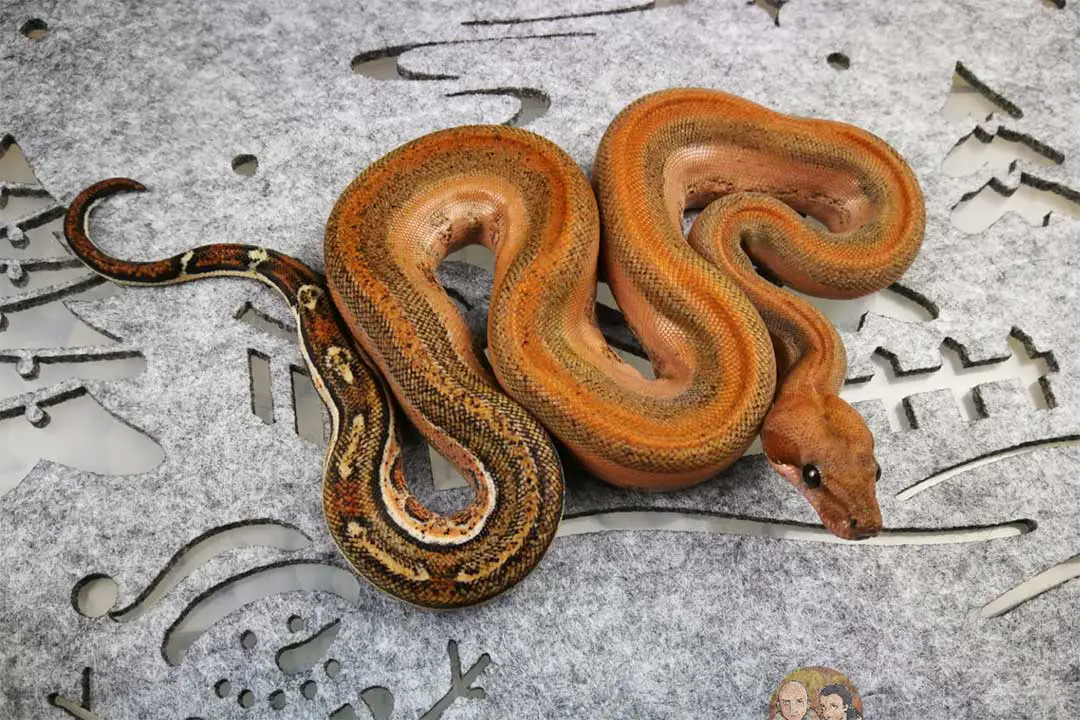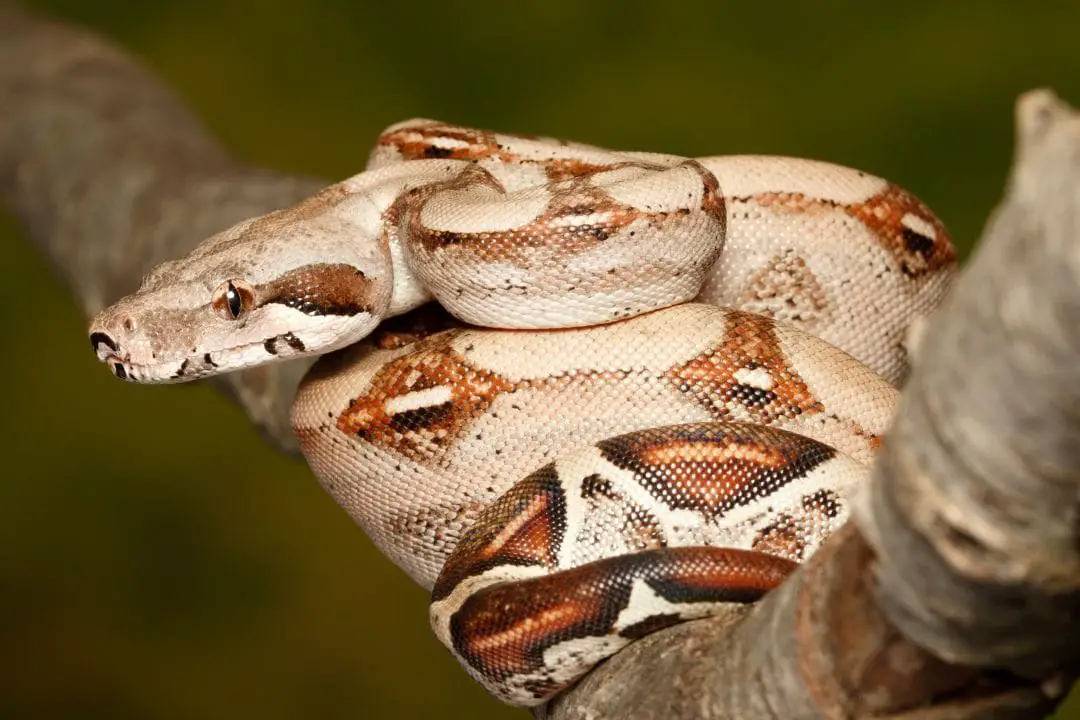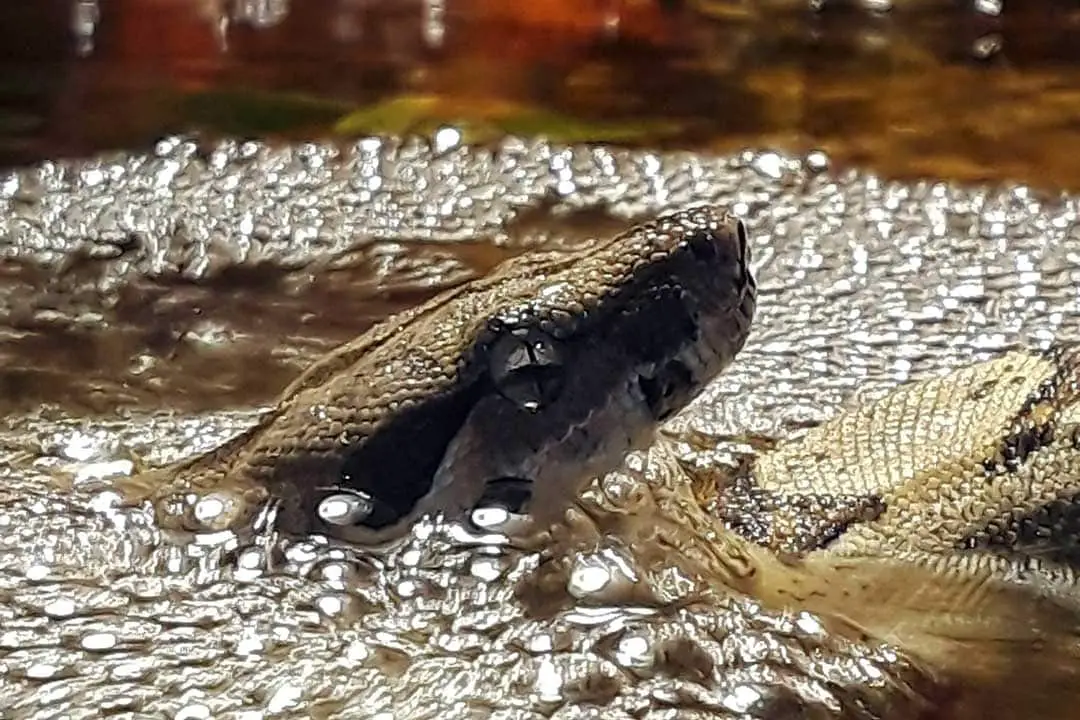The boa constrictor (Boa constrictor) has been kept in captivity and bred for many years. This has resulted in a number of beautiful colors and patterns that can be found in captive-bred snakes.
These are called morphs, and some can be combined to create unique and beautiful snakes.
For a complete guide to enclosure setup, feeding, daily care and breeding,
check out my Boa Constrictor Care Sheet.
1. Albino
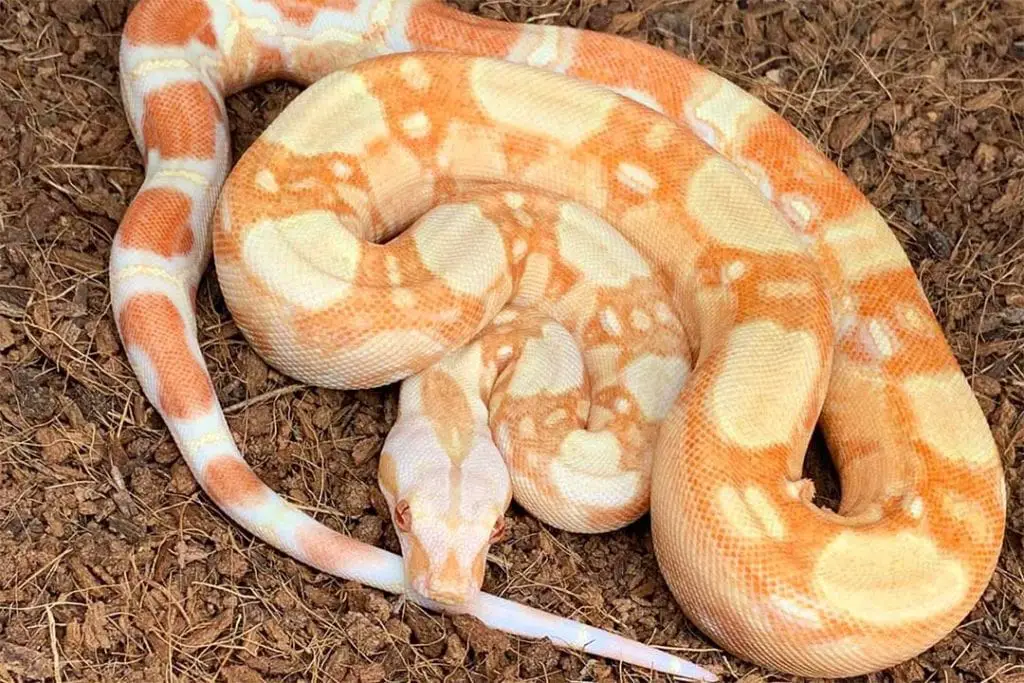
Albino snakes are some of the most common morphs. Albino boa constrictors lack melanin and typically appear to be yellow, orange, pink, or white with pink eyes.
This gene is recessive, so a snake needs to inherit two copies of the gene in order to show the color. It is currently theorized that there are two variants that either have or lack tyrosinase.
This is an enzyme required for synthesizing melanin. Testing is still needed since there are several lines of snake that have exhibited albinism.
Several lines of albino boa are not genetically compatible. The first line of albino is known as the Kahl albino. There is also the Sharp line that has a stronger white appearance.
These lines are not compatible and breeding them produces babies that look normal but carry the genes for both lines.
2. Anery
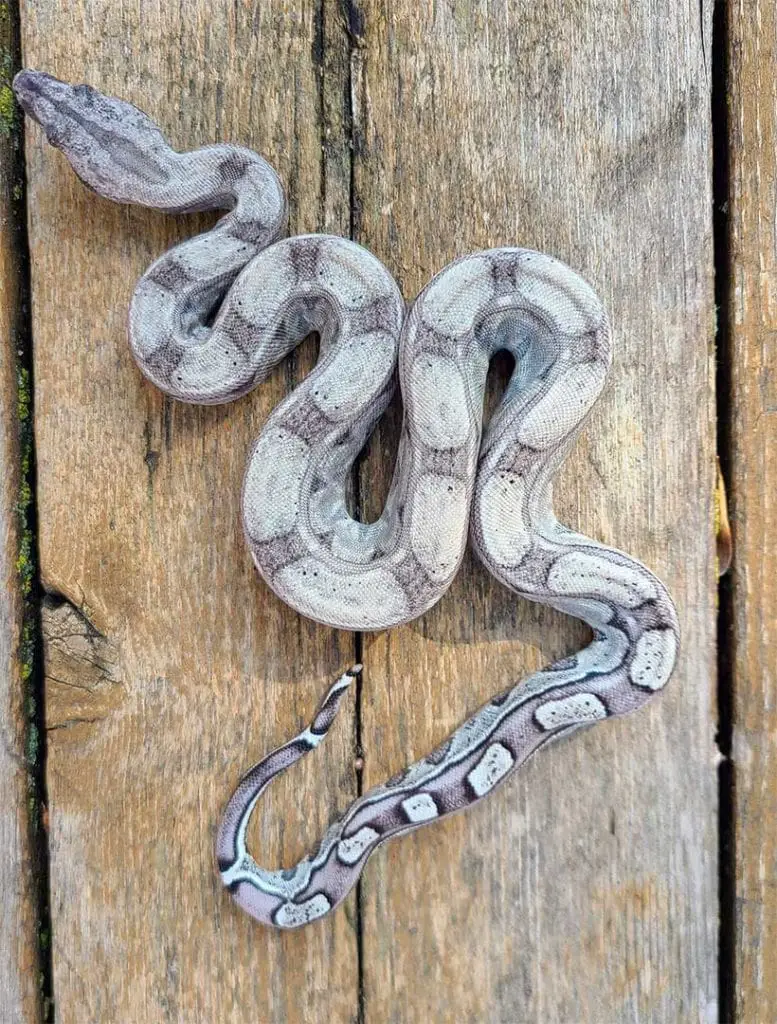
Anery is short for anerythristic. These snakes lack red pigment, which can change the appearance of the snake. For instance, the red-tailed boa (B. c. constrictor) has a red tail in its normal coloration.
Anery snakes lack the red and most will look gray or silver with lavender tails at birth. As the snake ages, the saddle and tail will turn brown or yellow.
This is a recessive gene, so both parents need to carry the gene for any babies to have the coloration.
3. Hypomelanistic
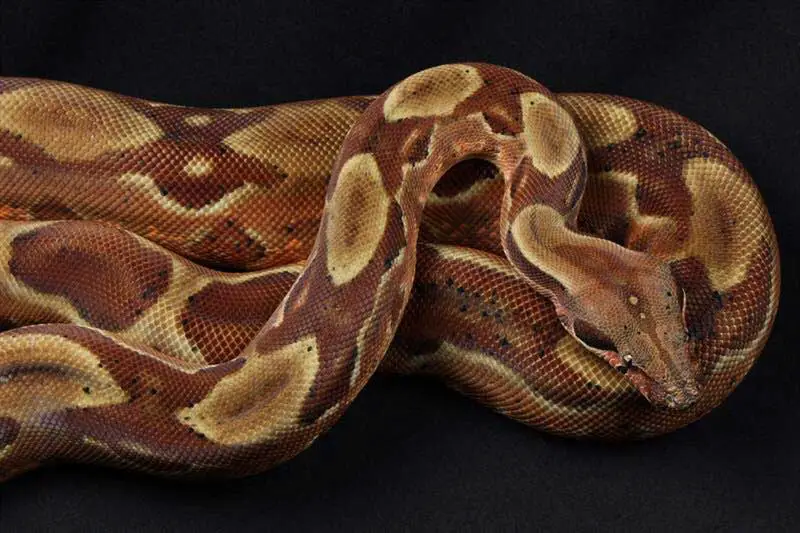
Hypomelanistic boas are also called hypos for short. They have reduced brown and black coloration compared to the wild coloration.
There are two known lines, salmon and orangetail. This is a co-dominant gene, meaning only one copy is needed for the coloration to appear.
Two genes increase the intensity of the coloration, causing what is known as a super hypo. Since the gene is co-dominant, it can create interesting combinations with other genes.
4. Ghost
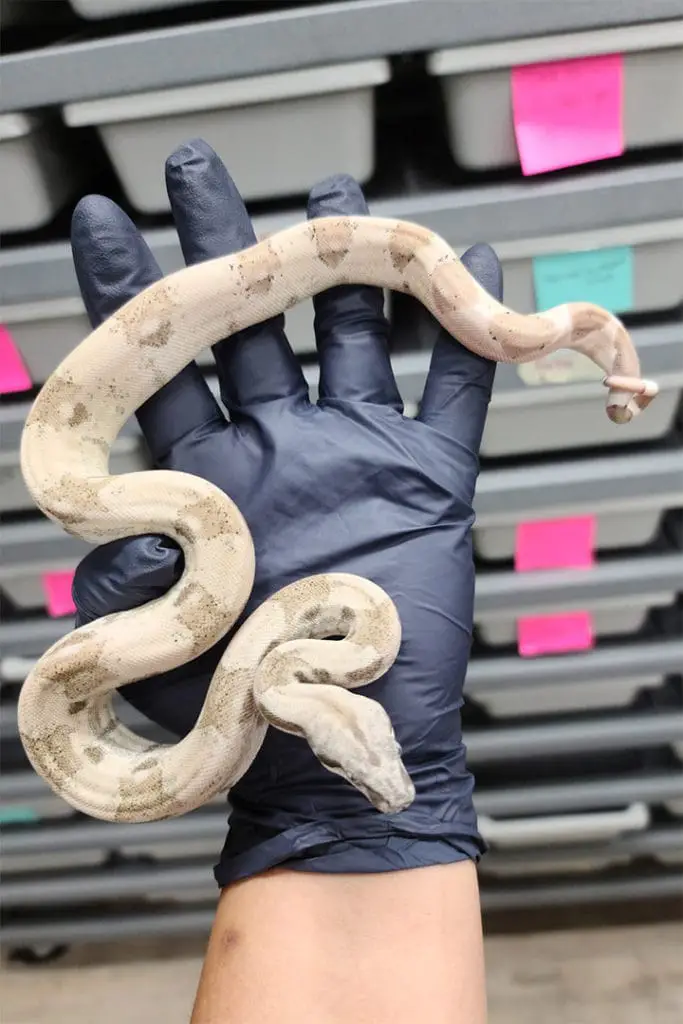
Combining genes can create unique looks to boa constrictors.
Ghost is the name for a snake that has both hypo and anery. These snakes have a unique gray appearance.
5. Motley
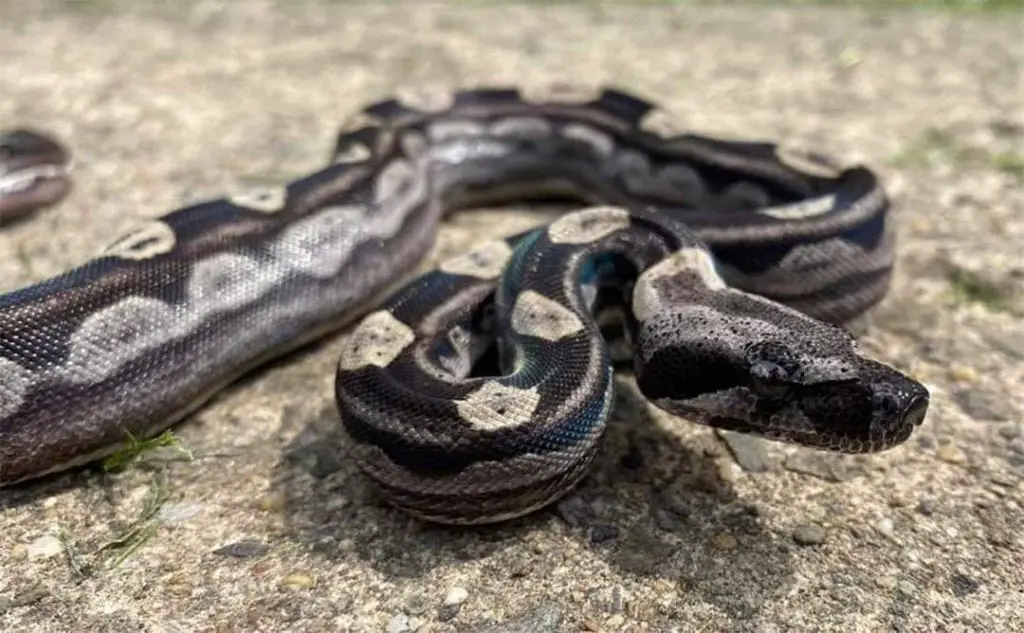
The motley gene changes the pattern of the boa. It was named because it looks like the motley pattern in corn snakes. This is a co-dominant gene that has a super form.
However, the super form is known to prove fatal. They typically don’t live for more than 2 years.
6. Snow
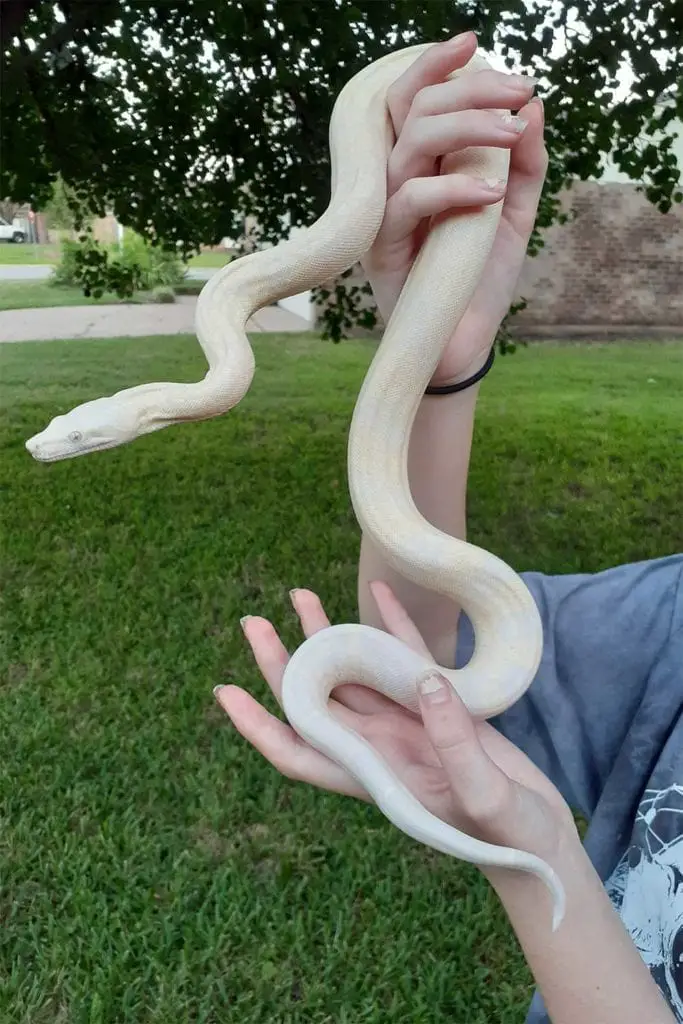
Snow is the result of two recessive genes being displayed in one animal. In this case, it is a combination of the albino and anery traits.
This is a hard morph to get since you need two snakes that both carry the anery and albino genes.
This morph tends to have a white look with some visible patterning.
7. Sunglow

Sunglow is the name for snakes with an orange and white appearance. This morph is the result of a snake displaying both the hypo and albino genes.
Any snake with this name will have both copies of the albino gene and at least one copy of the hypo gene.
8. Snowglow or Moonglow

The names refer to the same combination of genes using different lines of albino.
A Sharp line albino with anery and hypo is called a snowglow, known for a very strong white coloration.
The same combination using a Kahl albino instead is referred to as a moonglow, though most snakes look very similar.
9. Leopard
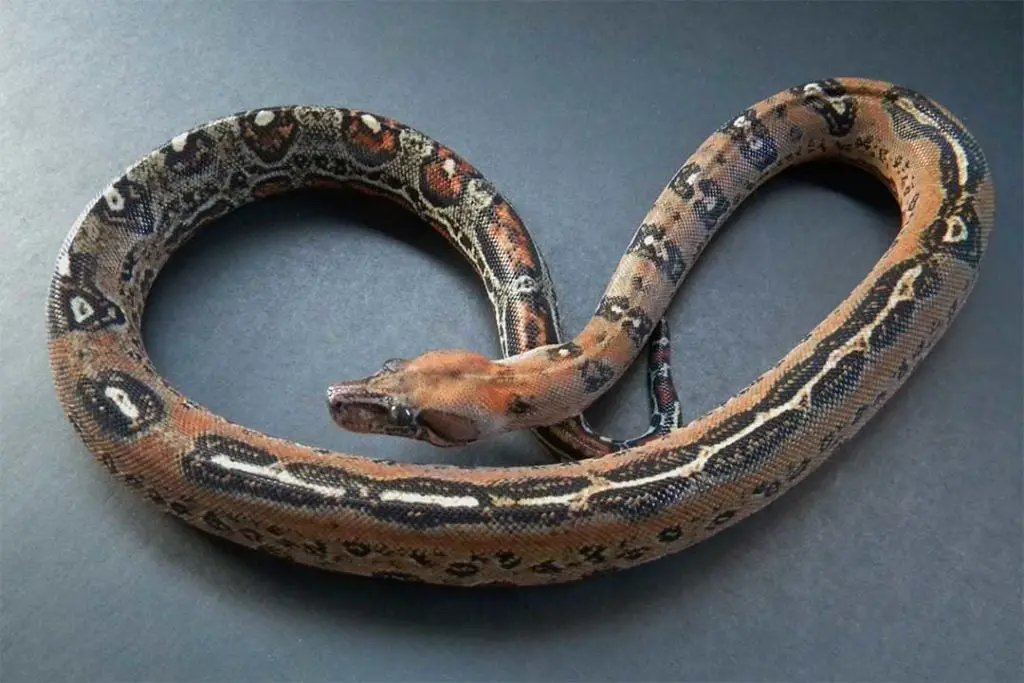
Leopard boas are a morph of the Sonoran Boa (Boa sigma) which was recently determined to be its own species.
This is a recessive gene that causes a change to both color and pattern of the snake.
10. Aztec
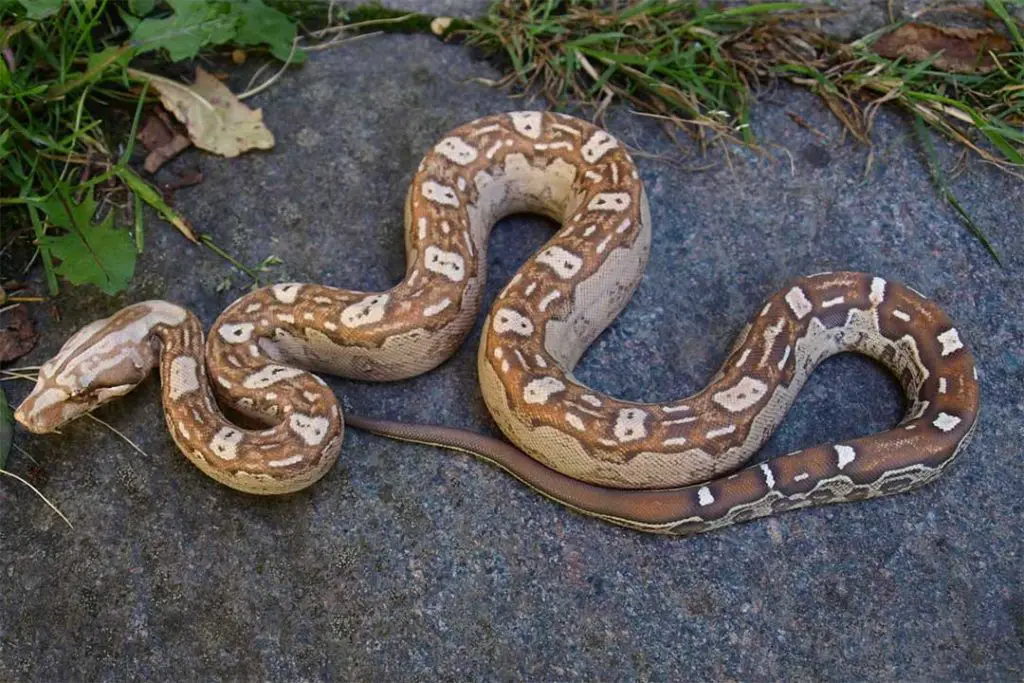
Aztec is a color and pattern mutation. It causes the saddles in the normal pattern to form a blocky look down the sides of the snake.
They seem to have a higher amount of all the common pigments resulting in more intense colors. It is a co-dominant gene.
In its super form, it causes an issue with lack of coordination in the snake and general weakness.
11. Striped
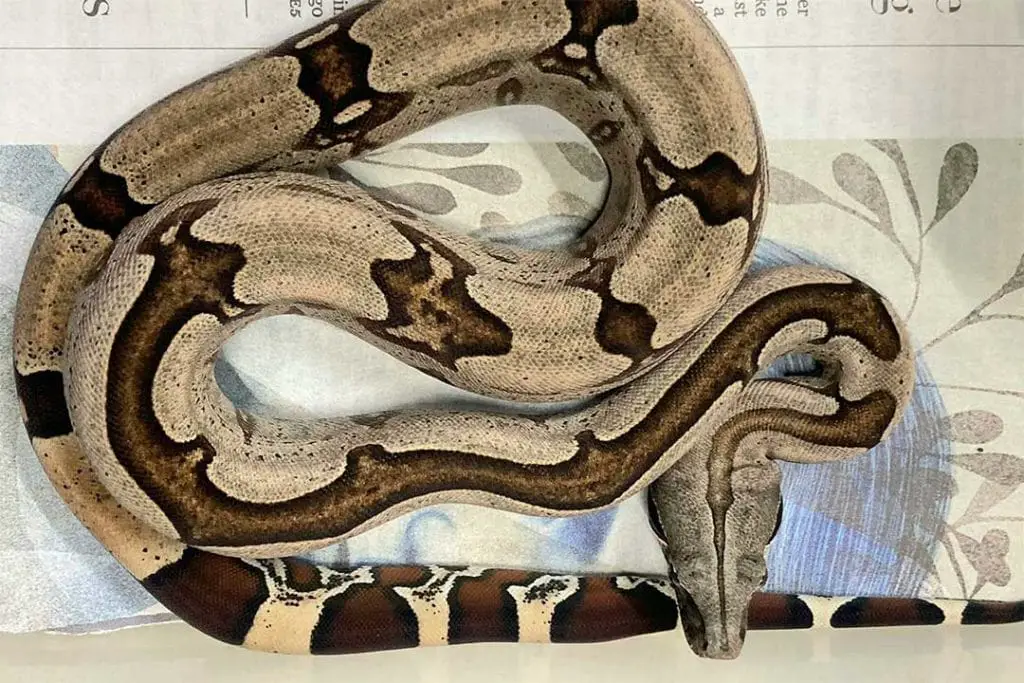
Striped is the name for a pattern mutation that also causes a more intense red color to the tail of the snake.
The reason this morph is referred to as striped is because the normal saddle patterning has fused to create stripes that go down the length of the animal’s body.
This is a recessive gene.
12. Arabesque
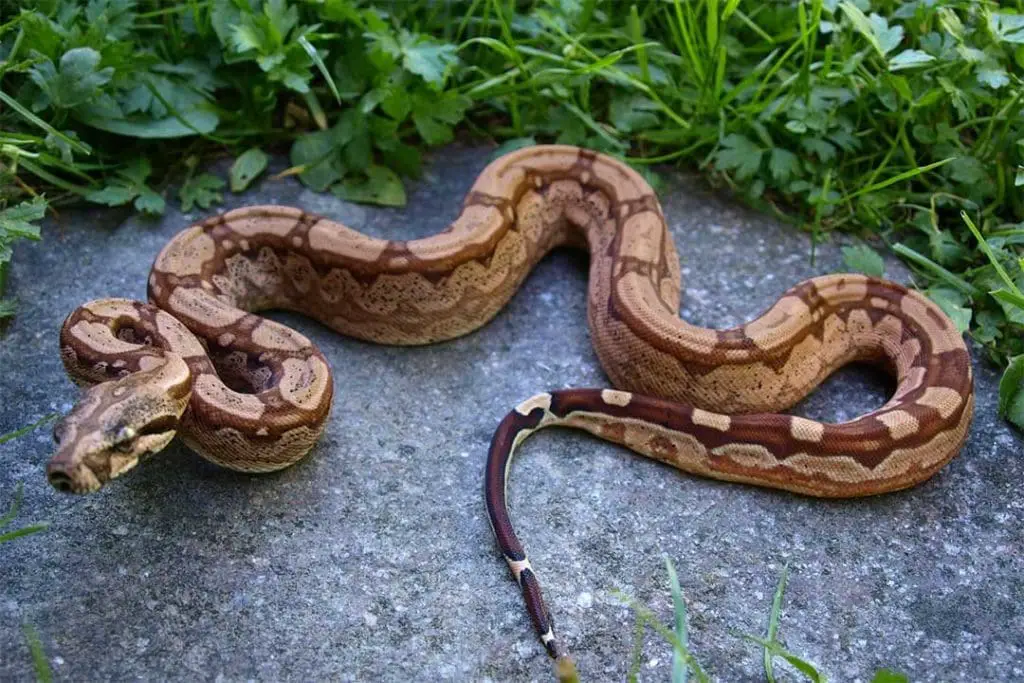
Arabesque is the name of a co-dominant gene that causes a change in color and pattern. An animal with one copy of the gene has black flecking and reduced saddles.
The super form is noted as having a beige base color, reduced patterning, and a dark tail.
13. Jungle
Jungle is a color and pattern morph. Jungle boa constrictors have a beige background color, a needle pattern on the head, and have reduced saddles that continue to the tail.
This is a co-dominant gene. However, the super form is linked to early death, infertility, and a weak liver.
14. Tiger
This is another pattern mutation. The tiger morph has reduced saddles, however, their tail is usually unaffected. They tend to have increased yellow pigment.
It is unknown whether this is a dominant or co-dominant gene.
Conclusion
Boa constrictors come in a wide variety of beautiful colors and patterns.
You can find many unique combinations that will make your new baby boa pet one of a kind. Be sure to look into any potential health issues so you are prepared to take care of your boa constrictor properly.
If you have any questions or comments, leave them below.
